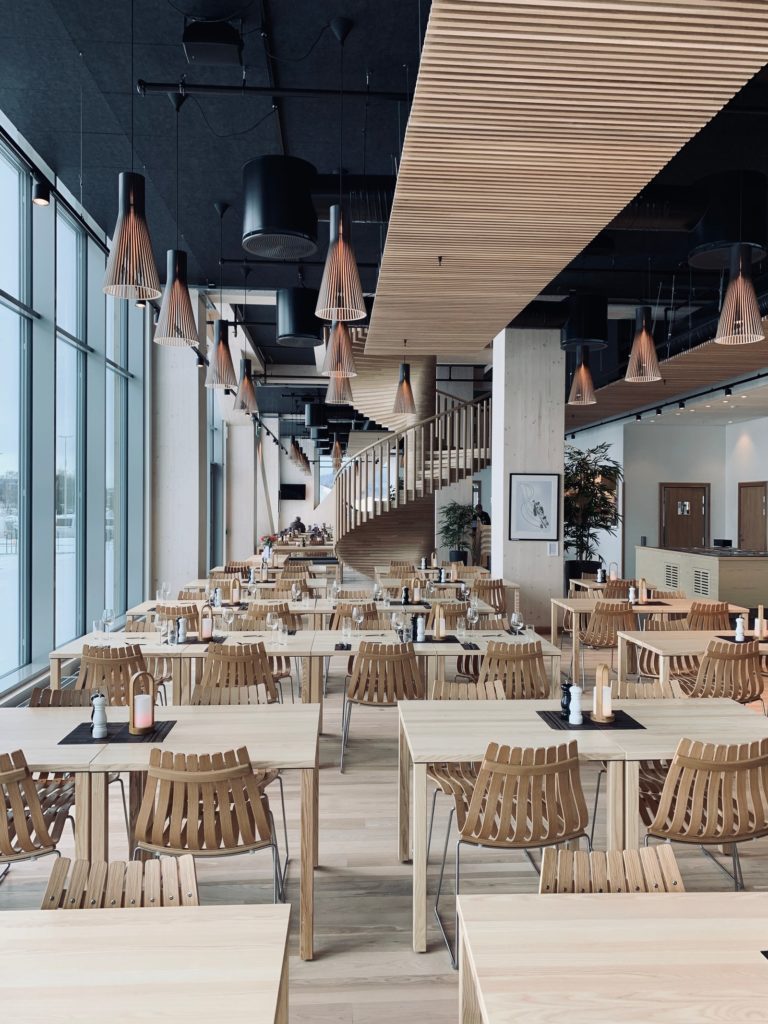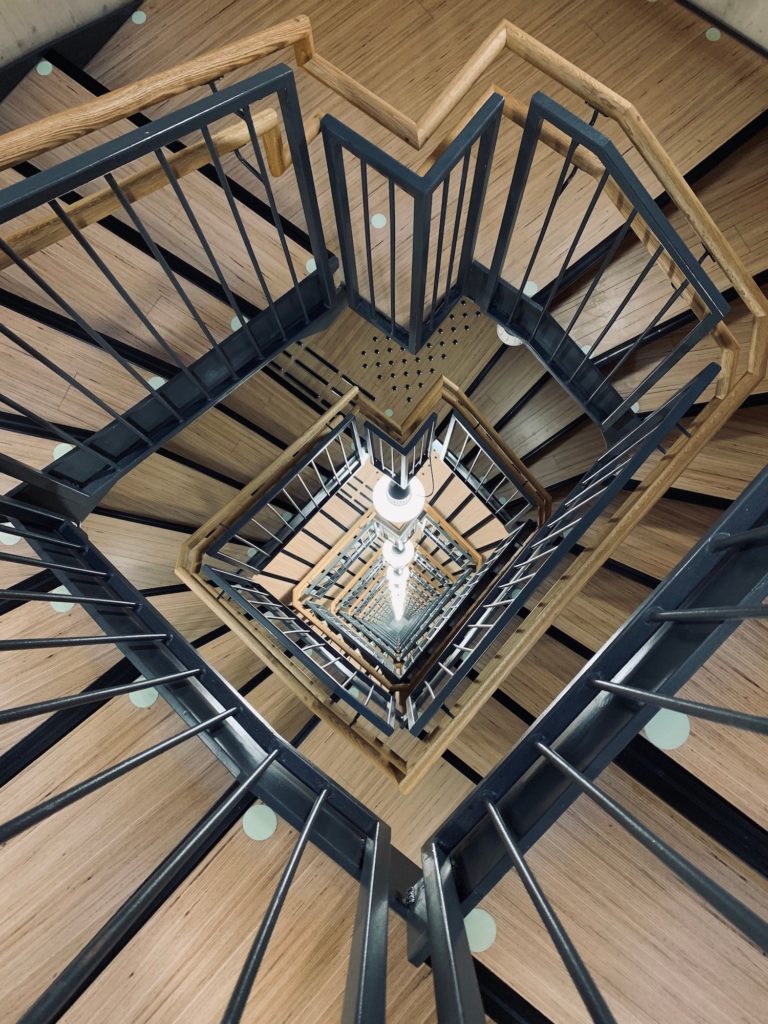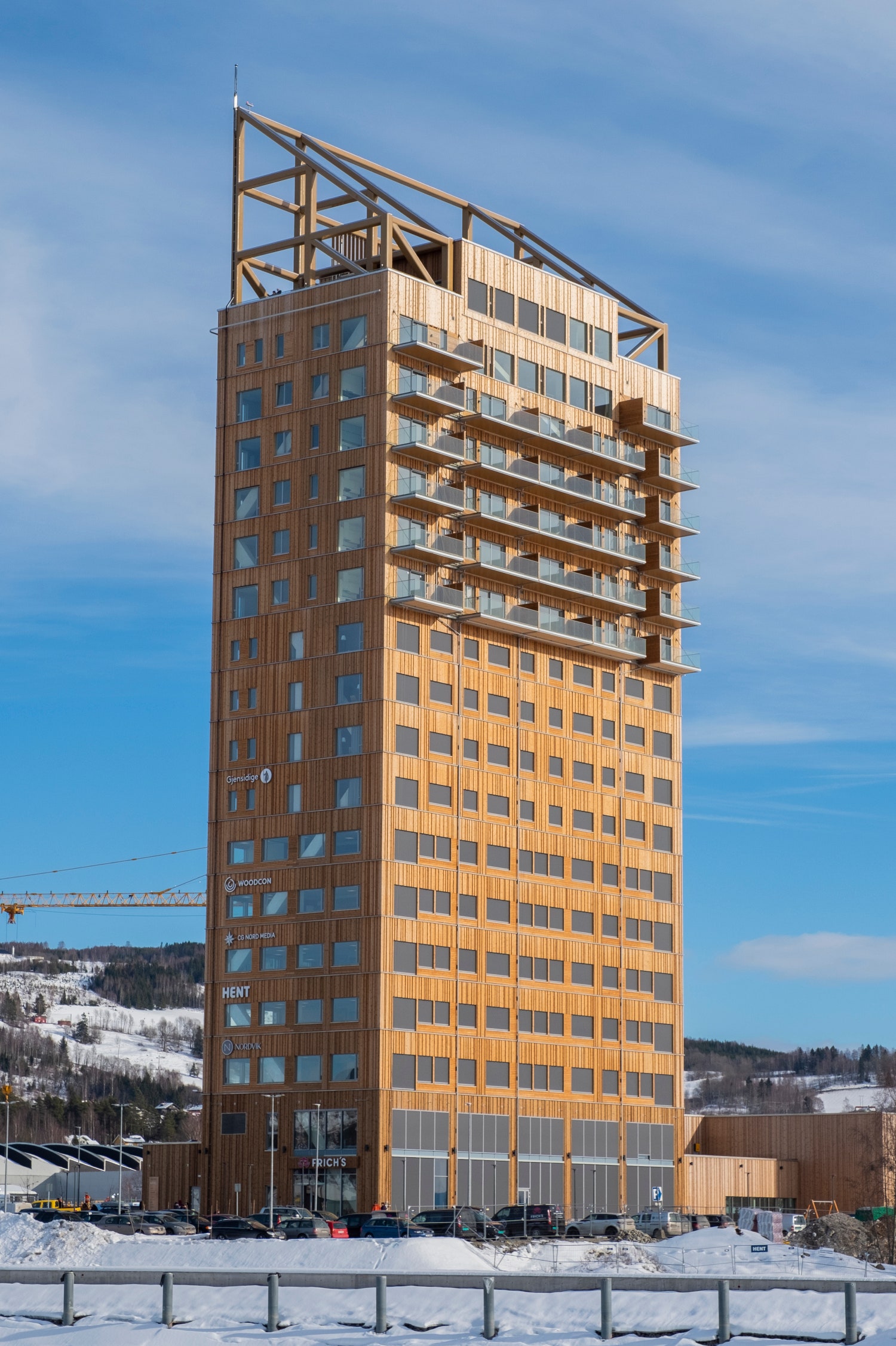Located in central Norway, Mjøstårnet is a 280-foot-tall structure that is pushing the limits of architecture and blazing a trail for the sustainable cities of tomorrow
Worldwide, buildings produce approximately 40% of all carbon dioxide emissions. While net-zero energy buildings and retrofits can improve these numbers, the construction industry and, in particular, the materials it uses, has an intrinsic role to play. In Norway, a new skyscraper built almost entirely of wood – called a “plyscraper” – has finally opened its doors. The Mjøstårnet building, which includes a hotel, restaurants, offices and apartments, stands at 280 feet (18 floors), making it the tallest wooden structure in the world.
Could this be the key to creating the sustainable cities of tomorrow? Wood building products company Moelven, which was behind the project, thinks so; Mjøstårnet was built using local renewable resources, and since the wood stores CO2 throughout its life cycle, no further emissions are released.
Owned by AB Invest and designed by Trondheim-based Voll Arkitekter, the nearly 122,000-square-foot building is located in Brumunddal, a small town in central Norway and close to the country’s largest lake (an area known for its robust industry of wood). To build the tower, the builders used glulam and laminated wood beams; both are strong enough to replace carbon-intensive concrete and steel and require less energy to produce.
Wooden buildings present some challenges, of course, the biggest being fire safety, and because the materials are lightweight, they shift more easily under extreme external forces. To overcome the latter, large-scale columns and trusses were used; many were left exposed, making them “a vital part of the interior design,” says Øystein Elgsaas, a partner at Voll. The building is also designed to withstand a complete burnout; tests show it will not collapse.

Much of the interiors of Mjøstårnet were crafted in wood, mimicking the exterior design. Photo: Courtesy of Voll Arkitekter AS/Øystein Elgsaas.
“What excites me most is that all horizontal and vertical loads on the building are handled by wooden structures,” says Rune Abrahamsen, managing director of Moelven Limtre, a subsidiary of Moelven that supplied materials for the project. Abrahamsen expects that the global construction industry will see a notable increase in wood framing for tall buildings; hybrid solutions in wood, concrete and steel would also be useful, he indicates. Abrahamsen believes there will likely be a wood-framed construction that breaks the 300-foot barrier within five years, and, in fact, a 1,148-foot, 70-story wood-framed tower has already been proposed in Tokyo.

A view of the staircase leading down the 280-foot-tall skyscraper. Photo: Courtesy of Voll Arkitekter AS/Øystein Elgsaas.
This would please Abrahamsen and Elgsaas immensely, it would seem; both say Mjøstårnet was largely built to help other contractors see what can be done. “The most important aspect of this building,” says Elgsaas, “is to demonstrate that it is possible to build large, complex wooden buildings and, in this way, inspire others to do the same.”
By Meaghan O’Neill
22 marzo 2019
AD Architectural Digest

